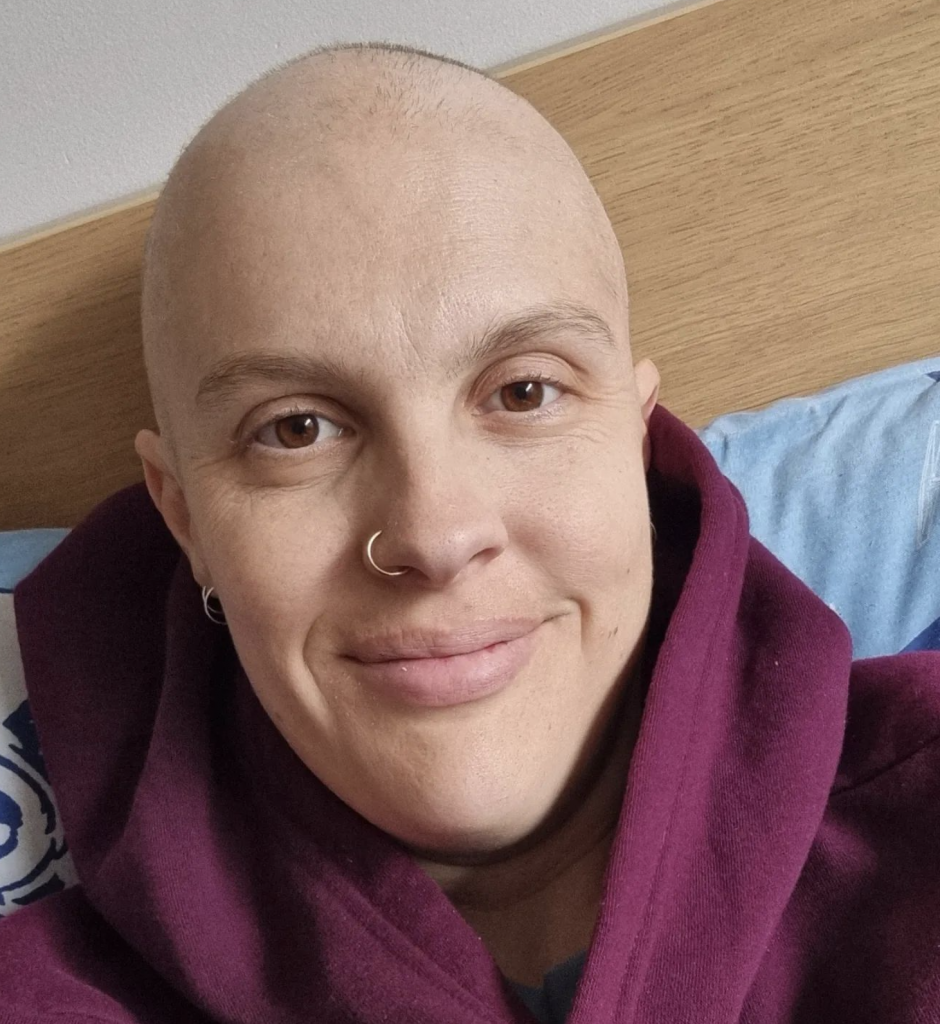A Highly Rare Cancer
- Bec Macnamara, 36, assumed the sudden pain in her left knee was due to her intense training for a CrossFit competition. After months of increasing discomfort, the mom of three was shocked to find out she had histiocytic sarcoma, an extremely rare and aggressive blood and bone cancer, and the pain was due to a large tumor in her leg.
- Soon after receiving this devastating health news, Bec learned she needed her leg amputated. Adjusting to all of this new information was understandably tough and overwhelming, especially for someone so healthy and active.
- Many sarcomas can linger unnoticed for quite some time until they start pushing on other tissue and potentially causing symptoms. Treating the disease really depends on the tumor location, its stage and the type of tumor (of which there are hundreds), with best results involving being able to have the entire tumor removed.
- Patients may undergo chemotherapy, along with radiation therapy to reduce the risk of the cancer coming back. Immunotherapy treatment is also possible for cases that have spread or recurred, or come back.
Soon after receiving this devastating health news, Bec learned she needed her leg amputated. Adjusting to all of this new information was understandably tough and overwhelming, especially for someone so healthy and active.

Bec’s Shocking Diagnosis
Investigating further, she discovered after an MRI test in April that she had a 20 centimeter, or near eight-inch tumor, in her left femur, which is a bone in the upper thigh. The strongest — and largest— bone in the human body.“That was a bit of a shock because I was expecting to see some sort of muscle strain or ligament damage or something as a result of my training.”
View this post on Instagram
To biopsy the tumor, her care team had to take samples from her femur, along with a bone marrow biopsy in the back of her hip. That was when they discovered that it was histiocytic sarcoma. Only one of the doctors had treated this of cancer before.
A Difficult Decision
As for her leg operation, she was given a choice between doing a partial removal that would risk infection and likely lead to more surgeries, or a full amputation right away.
“For me, having three young kids, I would rather lose the leg and have a better chance of survival than risk not surviving essentially,” she recalled of the difficult decision.
View this post on Instagram
However, her treatment plan took a sudden turn when her doctors shifted their approach, to shrink the tumor with chemotherapy first. There was a chance they could save her leg.
Emergency Surgery
But after just one chemotherapy treatment, as Bec repositioned herself in her hospital bed, she heard a “big crack.” Her femur had snapped and she “felt this humongous amount of pain.”
RELATED: SNTV’s ‘Sink or Swim’ — 4 Ways to Start Over After a Life-Changing Event
Solely doing chemotherapy at that point was a non-option and she needed to have surgery right away. Just two weeks ago, she underwent a procedure called a hip disarticulation where her entire femur was removed from her hip socket. She is still doing chemotherapy, and as of July 14, says she has four rounds left, one every 21 days.

Remaining as positive as possible, despite financial fears looming in her head, Bec is hopeful that she will be able to get a prosthetic leg and resume some of her normal life activities.
RELATED: How to Get Help With the Cancer Bills
To help her on her journey back to good health, her CrossFit community started a GoFundMe fundraiser campaign, which has so far raised over $15,000 dollars.

As she rests and recovers at home with her children Pippa, 7, Jasper, 9, and Toby, 13, Bec says the family has been using humor to help cope with this sudden life change, joking about “hiding lollies (lollipops)” inside her prosthetic leg and how she will now save money on shoes, “because I only need one.”
“I’m trying to make this as easy as I can on them and doing everything that I can to make sure I can be here to watch them grow up.”
Learning About Sarcoma
The word sarcoma refers to a large array of bone and soft tissue cancers.
For soft tissue sarcomas, according to the American Cancer Society (ACS), there will be an estimated total of 13,590 new cases diagnosed throughout 2024.
The most common types of sarcoma in adults include:
- Undifferentiated pleomorphic sarcoma (formerly called malignant fibrous histiocytoma)
- Liposarcoma
- Leiomyosarcoma
Liposarcomas and undifferentiated pleomorphic sarcomas are more common in the legs, whereas leiomyosarcomas are most often found in the abdomen.
Many sarcomas can linger unnoticed for quite some time until they start pushing on other tissue and potentially causing symptoms.
“Unfortunately, most sarcomas do not cause many of the symptoms that may be associated with other cancer,” Dr. Dale Shepard, director of the Cleveland Clinic Taussig Cancer Institute Phase I and Sarcoma Programs, told SurvivorNet in an earlier interview.
‘Don’t Push Things Off, Life Is For Living’ – Taking Charge of Your Health
Common symptoms to look out for if they do arise may include:
- Constipation
- Feeling full sooner than usual
- Pain
- Nausea
- Swelling
- Unintended weight loss
- Vomiting
- Growing lump in the arm or leg
- Trouble swallowing, if the cancer is in the esophagus
Adding to the confusion and harder-to-pinpoint symptoms is the fact that there are so many types of sarcomas.
“There are hundreds of different kinds of sarcomas, which come from different kinds of cells,” Dr. George Demetri, director of the Sarcoma and Bone Oncology Center at Dana-Farber Cancer Institute and Harvard Medical School previously shared with SurvivorNet.
This is a large reason why identifying the specific type of cancer is difficult for providers, and ACS notes that pathologists will even disagree over which type of sarcoma it may be.
Advocating for Your Health
Treating sarcoma really depends on the tumor location, its stage and the type of tumor, with best results involving being able to have the entire tumor removed. Patients may undergo chemotherapy, along with radiation therapy to reduce the risk of the cancer coming back. Immunotherapy treatment is also possible for cases that have spread or recurred, or come back.
RELATED: 28-Year-Old Woman Spotted Fast-Growing Lump On her Leg, It Turned Out To Be Stage 4 Sarcoma
“More than other types of cancer, the benefits of multidisciplinary care should prompt most patients to be seen by a group that specializes in treating sarcoma.” Dr. Shepard explained.
How to Access More Expert Opinions on Your Treatment Plan
“Even if only for a second opinion or to develop a treatment plan, multidisciplinary care is crucial,” he added. “
As examples, patients may benefit from surgical resection or radiation therapy even with metastatic disease. Patients may benefit from the addition of chemotherapy to radiation therapy prior to surgery to resect a sarcoma.”
Learn more about SurvivorNet's rigorous medical review process.

